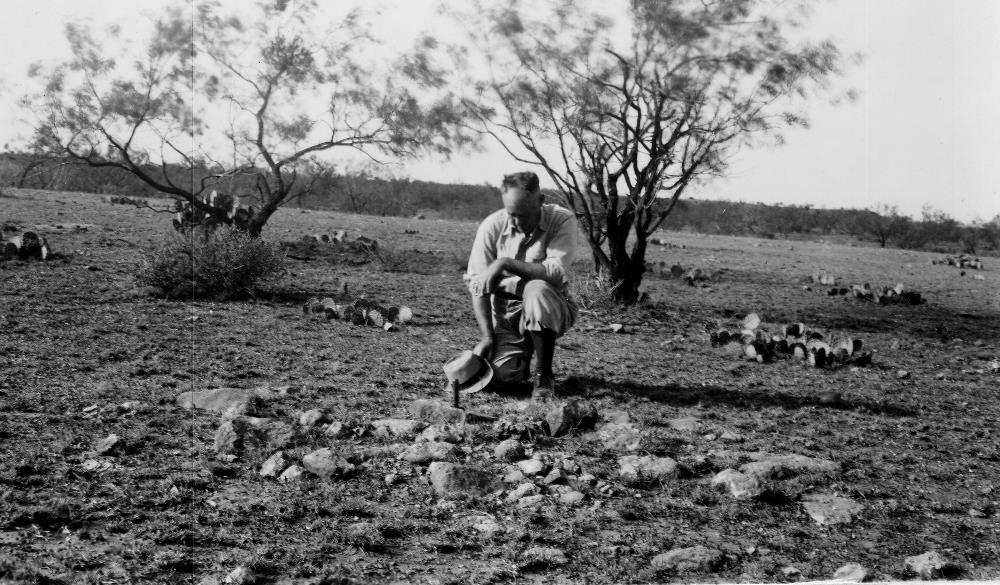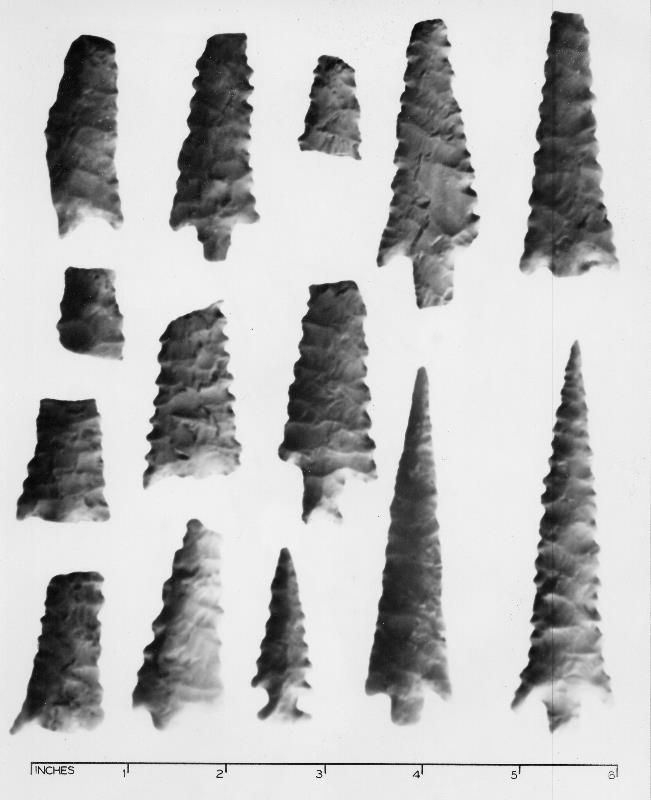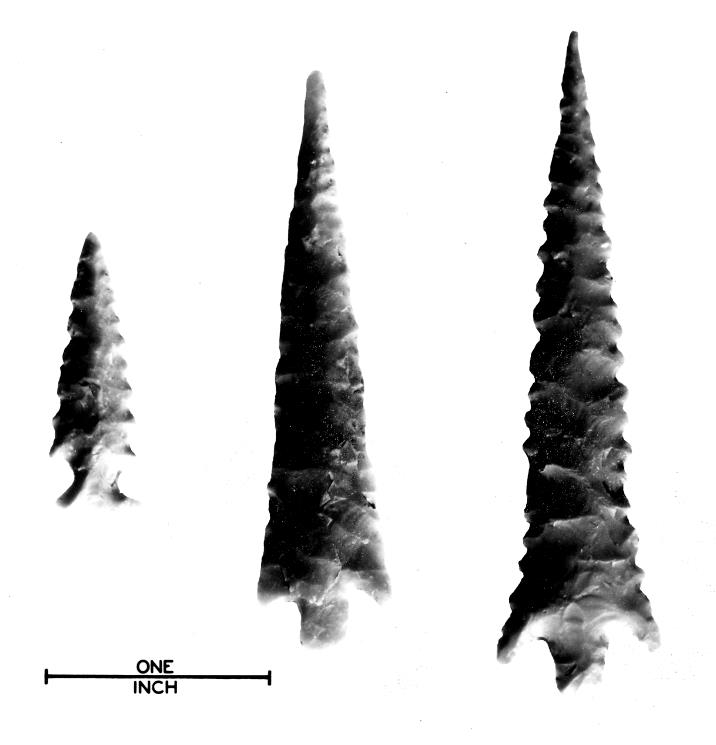Site 41JS1 is a cairn burial site situated on a terrace some 45 feet above the Clear Fork of the Brazos River. Remains of a campsite with extensive chipped-stone debris lay on the gravelly hill above; a burned rock midden was located about 150 feet south of the grave.
Cyrus Ray, A.T. Jackson, and W. G. McMillan conducted excavations at the site in 1937, uncovering the headless remains of an adult. Joe Ben Wheat continued investigations in 1940, excavating the graves of a woman, a child, and a man. Together, the four burials in this cemetery were notable for evidence of violence and grave inclusions, including serrated arrow points and Olivella shell beads.
In Ray's excavations, the cairn appeared as a concentration of cobbles and slabs partially exposed on the surface and extending over an area roughly five feet in diameter. Some 100 stones in layers covered the grave. Under the stone covering lay the skeletal remains of a single individual who had been placed in flexed position, oriented north to south. The skull apparently had not been interred with the body.
According to Ray:
There was no trace whatever of the skull. While none of the [other] bones were very hard, enough were preserved to indicate that had the head been buried with them some of its parts would have remained, usually the teeth remain longer in good condition than the other parts of the skeleton, but there were no teeth in the grave. Evidently the head had not been buried with the skeleton.
Within the grave fill were 14 arrow points, 3 mussel shells, and 2 “roughed out” flints. Five are whole or mostly whole Moran type points, eight are fragments (possibly also Moran), and one is an expanding stem Scallorn-like point. All are well-made and have serrated blade edges.
The artifacts were recovered from various places within the fill. It is not known whether any of the arrows were the cause of death. A number have broken distal tips, however, suggesting impact.
In 1940, excavations by Joe Ben Wheat uncovered the remains of three additional individuals each covered by their own stone cairn. The burials had been placed in unlined pits and had been badly disturbed by burrowing animals. One of the cairns held the remains of an adult woman placed in flexed position on her back, with legs to side. According to Wheat, the skull had been removed prior to inhumation, the mandible removed, and the skull placed on a flat stone to the southeast of the main part of the burial. Also uncovered was the bundle burial of a child, roughly four years of age, accompanied by nine Olivella spire-lopped shell beads. A third burial had been largely destroyed by rodents. A projectile point and shell may have been associated with this burial. |

A.T. Jackson (?) examines the stone feature exposed on surface. Excavations revealed that the concentration of cobbles and slabs covered a single flexed burial. TARL Archives.  |

Arrow points and fragments recovered from throughout the fill. Although several were found in close proximity to skeletal elements, none were thought to be related to cause of death of the individual. TARL Archives.  |

Detail of arrow points, including a Scallorn-like expanding stem specimen at left, and two Moran. TARL Archives.  |
|